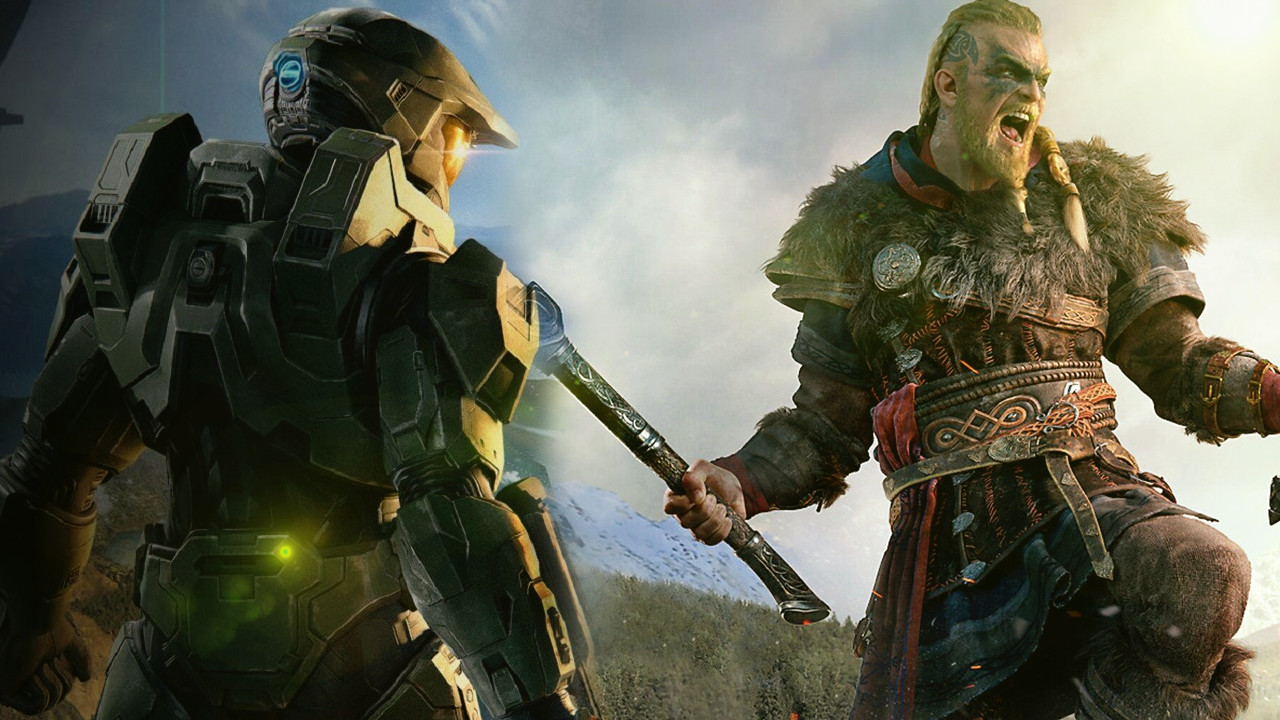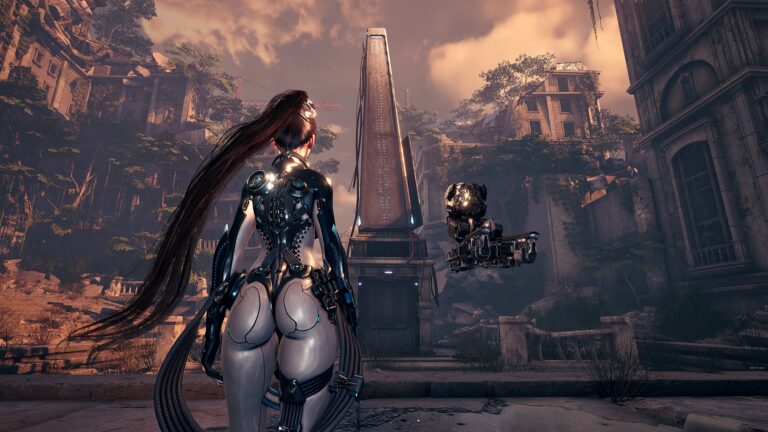With ninth generation consoles on the horizon, consumers have high hopes considering Sony and Microsoft’s messaging. Their talk of 8K, ray tracing, and 120FPS support has ingrained lofty expectations within the general gaming consciousness. While the PlayStation 5 and Xbox Series X may feature more impressive hardware at launch than the PlayStation 4 and Xbox One at their time of release, take modern marketing with a grain of salt.
https://www.youtube.com/watch?v=QJFk_dvIm6M
Setting Next-Gen Expectations
Consumers expect next-gen consoles to output native 4k at 60 frames per second, but this isn’t feasible even with the monumental leap in graphics and processing power. Setting realistic expectations goes beyond understanding the tech. Gamers need to understand marketing spiel.
The Xbox One X has already shown that the “4K Ultra HD” logo on the box and store page isn’t exclusive to native 4K titles. Games utilizing dynamic resolution and/or reconstruction up to a max 4K final output still advertise the 4K Ultra HD logo. Battlefield 5, Nier: Automata, Gears 5, Final Fantasy 15, and Assassin’s Creed Origins and Odyssey are notable examples. With more than double the GPU grunt considering the RDNA 2.0 architecture, which means more performance per teraflop, native 4K seems attainable.
The situation’s reality sets in when considering ray tracing, next-gen only titles, and variable rate shading, which is supported by PS5 and Series X. Make no mistake, there will be more native 4K and 60 fps games next-gen, but don’t expect such high pixel counts and frame rates for every game. Even cross-gen titles adopting ray tracing will sacrifice image quality, let alone the inevitably more intensive next-gen only releases.
Parsing out PR Speak
Never take public relations at face value. Most PR talk is an elaborate set of partial truths that aren’t exactly lies. With careful wording, they’re telling the truth while simultaneously injecting fluff into people’s minds.
“8K Ready” is a prime example. To the average consumer, this means the consoles are capable of 8K, which is true. They can output an 8K signal, but that doesn’t mean games will run at 8K. The system could only accept 8K signals for video playback, yet it wouldn’t be false advertising to make the “8K Ready” claim.
This claim scales down to 4K as well. So many developers this generation have claimed 4K on Xbox One X when it’s been faux-K. Similar claims will be made next-gen. With Microsoft’s official Series X page, we’re already seeing peculiarities that shouldn’t be possible given the hardware.
The Series X front page uses the 60FPS moniker for games targeting that refresh. Scorn, Bright Memory: Infinite, Chorus, Call of the Sea, and The Ascent advertise 60FPS. Unfortunately, Second Extinction, Vampire: The Masquerade—Bloodlines 2, and Yakuza: Like a Dragon neither list 4K nor 60FPS. Three cross-gen titles already failing to hit 4K at 60 frames per second is a bad sign. This is especially concerning for Yakuza, a title made with PS4 in mind before other platforms became part of the development pipeline. The fact that this isn’t an easy 4K 60FPS should serve as a reality check.
Speaking of Frame Rates
Just as gamers shouldn’t believe every next-gen game will reach native 4K, they should stop assuming 60 frames per second will be standard. Another reality check: it won’t. Yes, the PS4 and Xbox One’s CPU’s were major bottlenecks, preventing many games from targeting 60FPS.
Not every game’s frame rate is limited by the CPU. Many games are GPU-bound. It varies by title and engine. Due to the closed nature of console hardware, it’s almost a sure bet many developers will decide to target 30 frames per second on Series X and PS5 to push more complex simulations, AI, animations, etc…
Until the industry reaches the point whereby targeting 30FPS over 60 provides no appreciable difference in rendering or simulation complexity, that lower-end target is here to stay. Consequently, it’s fine to direct disappointment at games not running at 60 frames per second. It’s too early to say, but based on the Xbox site’s official listing and a translated quote, Assassin’s Creed Valhalla may run at 30FPS on Series X.
As an open world game, whose bottleneck is likely the CPU, it makes little sense to cap the frame rate, but don’t act so surprised either. The PS4 and Xbox One versions of Assassin’s Creed 4 were capped at 30FPS, as were the Assassin’s Creed 3, Liberation, and Rogue remasters. Current consoles are capable of running those games at 60 frames per second, but for some reason Ubisoft locked them at 30. Even divorced from console limitations, expect the 30FPS cap to remain because of inane decisions such as this.
Reality Sets In
Resolutions and frame rates aside, Bloodlines 2 announced ray tracing support on PC last year. Despite this, there’s no mention of ray tracing on Series X. A cross-gen game not running at 4K, 60FPS, or using ray tracing is something nobody saw coming. It’s possible Hardsuit Labs have other priorities. They may be pushing 30FPS to reach PC’s max settings at the highest attainable resolution. It’s not a bad trade-off, but it’s not what most people are expecting.
Yakuza is the most curious case, seeing as previous cross-gen titles ran at sub-HD and 30FPS on PS3 with the PS4 versions hitting 1080p at 60 frames per second. In Yakuza 3-5’s case, that same 60FPS target is maintained while running at higher resolutions on PS4 Pro. If this is possible on a bandwidth constrained machine with a mobile-grade CPU, there’s no reason Yakuza: Like a Dragon can’t reach 4K at 60 frames per second on Series X.
It’s possible these games don’t have the budget or the most talented teams working on them. Throwing extra cash or more talented developers at these projects could produce better results, but that’s another reality consumers need to understand. As with every console generation in history, not every title will impress. Next-gen releases will encompass a spectrum between ugly and breathtaking. This is the simple reality of game development with skill gaps, budgets, and time constraints impacting the final product.
Next-Gen Silver Lining
Pushing beyond that reality, mainstream outlets such as IGN have spread a false narrative that next-gen consoles won’t be a big leap. By virtue of the mid-gen systems typically focusing on resolution over improved settings combined with next-gen’s massive CPU jump, ninth-gen consoles will provide a bigger leap than the transition from seventh to eighth-gen, but not in the way most are expecting.
As discussed, many confirmed next-gen games are already coming out of the gate with paltry resolution and framerate targets, but these numbers don’t tell the entire story.
Xbox Series X and PlayStation 5’s biggest leap won’t be high resolutions and framerates. It’s in asset quality that the coming generation will excel, however, that’s where marketing teams come up against a wall. Another false narrative industry people love spreading is the notion that graphics can’t get much better than they are now. These people must be forgetting the draw distances, inconsistent texture quality, low polygon counts on incidental objects, and reduction in effects as the generation has gone on to allow engines to be pushed in other ways. As an example, Assassin’s Creed Odyssey has better textures and level of detail streaming than Origins, but it’s missing smaller effects such as wet clothing and torches blowing according to wind direction, along with less convincing fire propagation.
Until games adopting a photorealistic art style appear photorealistic under every condition rather than in specific locations under specific lighting conditions with clever photo mode manipulation, there’s so much room for growth.
The industry is reaching the point whereby visual gains are becoming more difficult to showcase through compressed internet footage. 4K YouTube feeds don’t have a high enough bitrate for appreciable comparisons. Some gamers criticize tech channels in the vein of Digital Foundry for zooming in 300x. They don’t do this to defend a plastic box. The extreme zoom-ins serve to compensate for internet compression, providing a more accurate representation of image and asset quality differences across platforms—differences that’ll be more noticeable from standard gameplay angles due to the absence of video compression.
Next-Gen’s Benefits
The PlayStation 4 and Xbox One released as underpowered, barely mid-range pc’s in 2013 whereas Series X and PS5 are targeting the high-end. In Microsoft’s case, this comes from the GPU whereas Sony’s placing its bets on the SSD. Both manufacturers are also using 16GB of GDDR6 RAM, which will come in handy for high resolution textures, unique assets, and asset streaming in combination with the SSD’s. Entertaining the notion that the difference won’t be substantial is absurd.
It’s not about pixel counts and ridiculous refresh rates. It’s about the assets themselves. Variable rate shading in combination with dynamic resolution scaling and/or reconstruction will allow these consoles to push settings and effects beyond the expected. In allowing shader operations to apply to larger portions of an image unnoticeable to most users, the render budget frees up for more exciting effects.
Ninth-gen consoles’ image quality may not be as revelatory, but it’ll be a worthy trade-off when people see these games running in person. Internet video compression and streaming tech needs to catch up with next-gen. Rest assured, the PlayStation 5 and Xbox Series X will surprise audiences.
No related posts.






